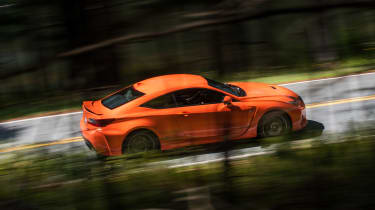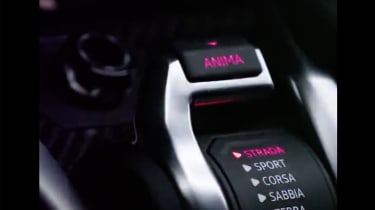'Mode buttons are all well and good, but only if they genuinely add to the thrill of driving'
Meaden questions the value of modern-age driver modes, and whether this is one more performance element we don't really want...

If you’re a regular visitor to the pages of evo, you’ll be familiar with our Tolkienesque war of Digital versus Analogue. It’s been waged for years now, the once pre-eminent forces of feelsome good embattled by the creeping scourge of electronic evil.
The most obvious manifestation of this digital dynamic revolution is in the various driving modes most even vaguely sporting cars now offer. We now have an unprecedented ability to tailor a car to our specific tastes. For once, I don’t have a downer on this particular area of progress, but I do ask myself how many of us actually make full and regular use of the technology.
> Click here for our review of the Lamborghini Urus
The answer is something we’ll have to crowd source, so feel free to share. Personally I find it depends on the car I’m driving. If I’m in an M BMW I’m forever fiddling with the steering, damping, powertrain and transmission settings. I can find a sweet combination for a certain stretch of road, but then it doesn’t feel quite right when the road changes, so back I go, toggling through the options to ramp something up, wind it back or dial it out. It’s fun for a while, but then I wish it would just work happily across a broad spectrum of conditions. In other cars, for example my not-so-recently departed Lexus RC F, I settled on a combination of settings and rarely touched the buttons again, save the odd prod of the DSC and e-diff buttons if I was feeling mischievous.

Cars aren’t equipped with road tester’s pants, so they can’t use the seat of said undergarments to understand what’s going on. Instead, myriad sensors paint a binary picture of how hard the car is working. Pitch and yaw, steering angle, wheel speed, throttle position and countless others continually provide a stream of hi-fidelity information to create one big fully integrated dynamic matrix. So, instead of just working with the steering to affect how the car changes direction, engineers also play with the e-diff and torque vectoring to change the rate at which the car rotates into a corner. Brake steer is another example.
It’s brain-achingly complex stuff to merge and refine so that the whole car responds seamlessly, and – when done well – massively impressive to experience the difference as the car’s responsiveness is ramped up with each dynamic mode. But what are we actually feeling as we toggle between settings?
Engineers refer to it as ‘experience function’, which sounds a bit dry, but is actually rather fascinating, for it’s as much about the psychology of the driver as it is the car’s dynamics. How so? Well, it stands to reason that when we push a button that engages a mode called Comfort or Sport or Backwards Through Hedge we want to feel like something has changed in the car.

In the good old days, nascent iterations of these dynamic modes could be hilariously exaggerated. My neck still twinges at recalling the violence of Lamborghini’s Corsa mode, which basically mimicked the highly caffeinated and testosterone-fuelled gearshifts of an angry Italian boy racer. Not so much a dynamic mode as Self-Destruct Mode.
> How does the BMW M5 Competition rate? Read our review to find out
The sneaky genius of today’s experience function is that for a short pre-determined period you get a marked step-change in the way the car feels. But it does so by over or undershooting to make Sport feel all angry and manly and Comfort all fluffy and cuddly. And then, having fooled the primitive organic component behind the steering wheel, it settles back to sensible levels. Very clever, but like some sleight-of-hand magic, it feels a bit disingenuous.
Who does it best? Predictably, Porsche is very good at striking a balance and ensuring each rotation of the switch or push of a button not only delivers a tangible difference in ride or response, but a meaningful one that you can select and stick with. In recent years Aston Martin has introduced multi-mode dynamic settings, which has brought a new dimension to its cars. However, I would say Ferrari is consistently the best at offering a suite of distinct and finely judged settings. The cars are unbelievably sophisticated, yet not only do they manage to feel natural, but each mode very definitely alters the state of the car. And all via the deliciously tactile manettino, for a bit of added theatre.
I suspect there’s something of a paradox in experience function and dynamic modes in general. When the calibration of each dynamic mode genuinely expands the performance envelope it’s another tool for us to use. But if this complex calibration has been perfectly executed the chances are the car is brilliantly sorted anyway, so there’s little need to meddle. Conversely, ill-sorted cars that use dynamic modes and experience function as smokescreen are the ones you’re forever hunting that elusive sweet spot. I’d be intrigued to know what you think.
Richard is a contributing editor to evo and is always the last columnist to deliver his words


